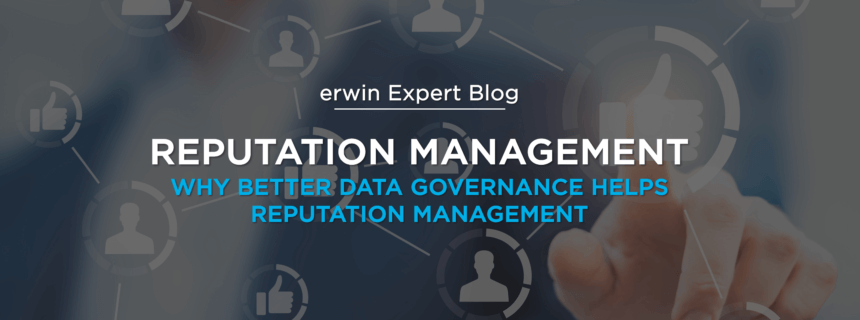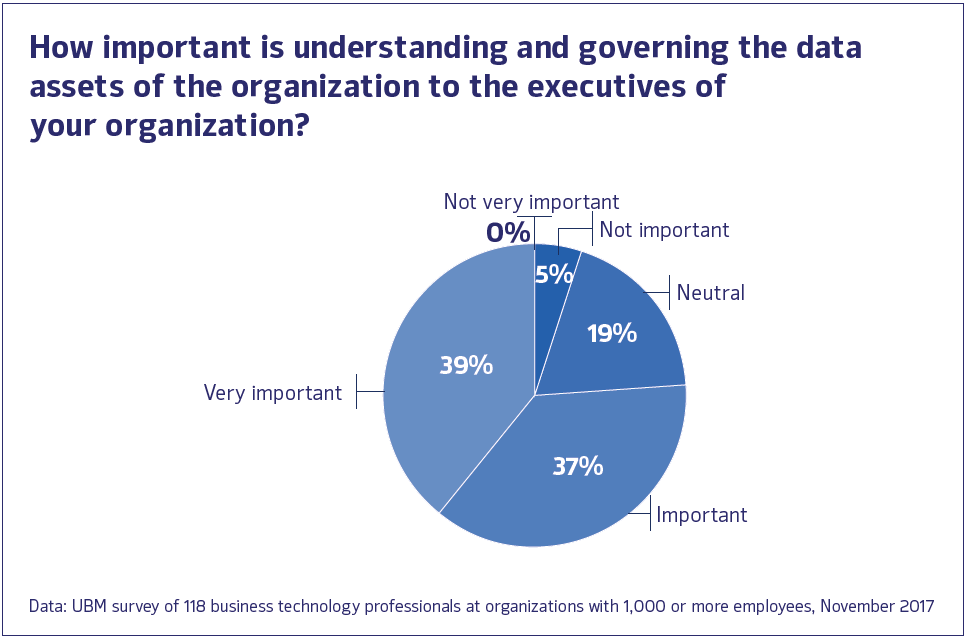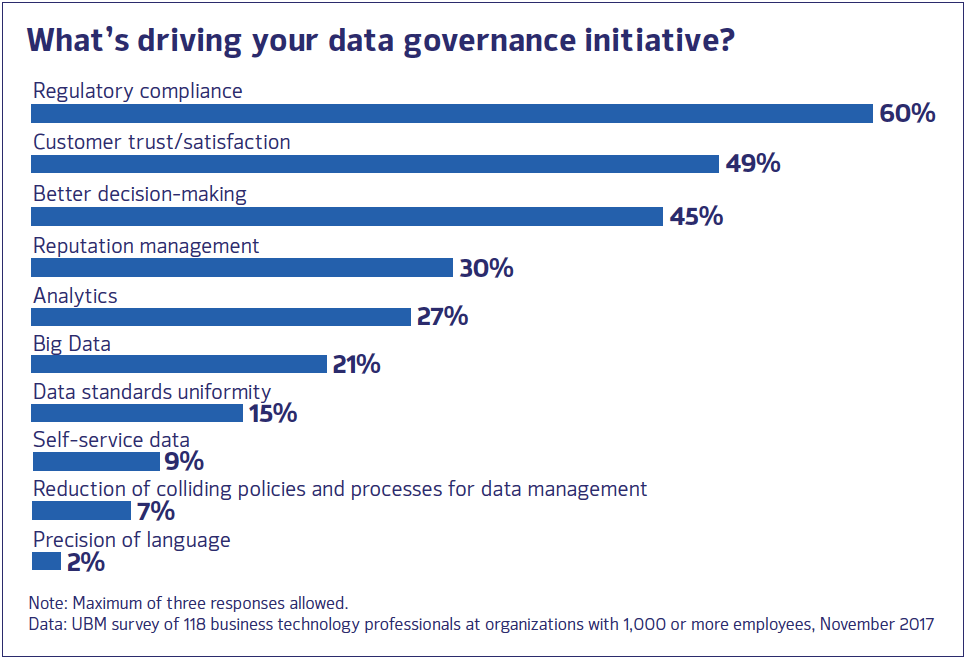Data Plays Huge Role in Reputation Management

How much does your business invest in reputation management? It’s likely no one in the organization knows for sure because every interaction – in person, online or over the phone – can affect your firm’s reputation. The quality of the goods and services your organization provides, the training it gives employees, and the causes and initiatives it supports all can improve or worsen its reputation.
Reputation management has always been important to businesses, but because information flows so quickly and freely today, reputations are more fragile than ever. Bad news travels fast; often much faster than businesses can respond. It’s also incredibly hard to make bad news go away. Social media and search engines crushed the concept of the news cycle because they make it easy for information to circulate, even long after incidents have occurred.
One of the fastest ways to see your organization’s reputation suffer today is to lose or expose sensitive data. A study in the U.K. found that 86 percent of customers would not do business with a company that failed to protect its customers’ credit card data.
But data theft isn’t the only risk. Facebook may not have even violated its user agreement in the Cambridge Analytica scandal, but reputations have a funny way of rising and falling on perception, not just facts.
It’s estimated that Walmart, for example, spent $18 million in 2016 and 2017 on advertising for retrospective reputation management, after suffering from a perception the company was anti-worker, fixated on profits, and selling too many foreign-made products.
Perception is why companies publicize their efforts to be good corporate citizens, whether it means supporting charities or causes, or discussing sustainability initiatives that are aimed at protecting the environment.
When you are perceived as having a good reputation, a number of positive things happen. For starters, you can invest $18 million in your business and your customers, instead of spending it on ads you hope will change people’s perceptions of your company. But good reputation management also helps create happy, loyal customers who in turn become brand advocates spreading the word about your company.
Data permeates this entire process. Successful reputation management shows up in the data your business collects. Data also will help identify the brand ambassadors who are helping you sell your products and services. When something goes wrong, the problem might first appear – and be resolved – thanks to data. But what data giveth, data can taketh away.
A big part of building and maintaining a good reputation today means avoiding missteps like those suffered by Facebook, Equifax, Uber, Yahoo, Wells Fargo and many others. Executives clearly grasp the importance of understanding and governing their organization’s data assets. More than three-quarters of the respondents to a November 2017 survey by erwin, Inc. and UBM said understanding and governing data assets is important or very important to their executives.

A strong data governance practice gives businesses the needed visibility into their data – what they’re collecting, why they’re collecting it, who can access it, where it’s stored, how it’s used, and more. This visibility can help protect reputations because knowing what you have, how it’s used, and where it is helps improve data protection.
Having visibility into your data also enables transparency, which works in two ways. Internally, transparency means being able to quickly and accurately answer questions posed by executives, auditors or regulators. Customer-facing transparency means businesses have a single view of their customers, so they can quickly solve problems, answer questions, and help align the products and services most relevant to customer needs.
Both types of transparency help manage an organization’s reputation. Businesses with a well-developed strategy for data governance are less likely to be caught off guard by a data breach months after the fact, and are better positioned to deliver the modern, personalized, omnichannel customer experience today’s consumers crave.
The connection between data governance and reputation is well understood. The erwin-UBM study found that 30 percent of organizations cite reputation management as the primary driver of their data governance initiative.

But data governance is more than protecting data (and by extension, your reputation). It is, when done well, a practice that permeates the organization. Integrating your data governance strategy with your enterprise architecture, for example, helps you define application capabilities and interdependencies within the context of your overall strategy. It also adds a layer of protection for data beyond your Level 1 security (the passwords, firewalls, etc., we know are vulnerable).
Data governance with a business process and analysis component helps enterprises clearly define, map and analyze their workflows and build models to drive process improvement, as well as identify business practices susceptible to the greatest security, compliance or other risks and where controls are most needed to mitigate exposures.
For example, many businesses today are likely keeping too much data. A wave of accounting scandals in the early 2000s, most notably at Enron, led to regulations that included the need to preserve records and produce them in a timely manner. As a result, businesses started to store data like never before. Add to this new sources of data, like social media and sensors connected to the Internet of Things (IoT), and you have companies awash in data, paying (in some cases) more to store and protect it than it’s actually worth to their businesses.
When done well, data governance helps businesses make more informed decisions about data, such as whether the reward from the data they’re keeping is worth the risk and cost of storage.
“The further data gets from everyday use, it just sits on these little islands of risk,” says Danny Sandwell, director of product marketing for erwin.
All it takes is someone with bad intentions or improper training to airlift that data off the island and your firm’s reputation will crash and burn.
Alternatively, your organization can adopt data governance practices that will work to prevent data loss or misuse and enable faster remediation should a problem occur. Developing a reputation for “data responsibility” – from protecting data to transparency around its collection and use – is becoming a valuable differentiator. It’s entirely possible that as the number of data breaches and scandals continue to pile up, firms will start using their efforts toward data responsibility to enhance their reputation and appeal to customers, much in the way businesses talk about environmental sustainability initiatives.
A strong data governance foundation underpins data security and privacy. To learn more about how data governance will work for you, click here.
Examining the Data Trinity
A strong data governance foundation underpins data security and privacy.
Get the white paper
- Compliance Concerns Drive Many to Data Governance
- How Data Governance Can Help Build Customer Trust, Satisfaction
- Why Data Governance is the Key to Better Decision-Making
You can determine how effective your current data governance initiative is by taking erwin’s DG RediChek.
